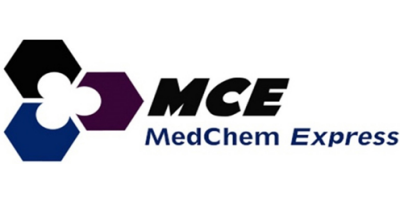

- Home
- Companies
- MedChemExpress LLC (MCE)
- Products
- MedChemExpress - Model Epothilone D - ...
MedChemExpress - Model Epothilone D - 189453-10-9
Epothilone D (KOS 862) is a potent microtubule stabilizer.MCE products for research use only. We do not sell to patients.
Epothilone D
MCE China:Epothilone D
Brand:MedChemExpress (MCE)
Cat. No.HY-15278
CAS:189453-10-9
Synonyms:KOS 862
Purity:99.82%
Storage:Powder -20°C 3 years In solvent -80°C 6 months -20°C 1 month
Shipping:Room temperature in continental US; may vary elsewhere.
Description:Epothilone D (KOS 862) is a potent microtubule stabilizer.
In Vitro:Epothilone D (KOS-862) is a more potent microtubule stabilizer in vitro than epothilone A or B. In vitro, Epothilone D has shown potent cytotoxicity in a panel of human tumor cell lines, with similar potency to paclitaxel. Epothilone D also shows a definite advantage over paclitaxel in drug-resistant cell lines, and retained its cytotoxicity against a multidrug resistant cell line over-expressing P-glycoprotein[1]. Epothilone D (EpoD) is a microtubules (MTs)-stabilizing agent[2].
In Vivo:To evaluate whether Epothilone D (EpoD) improves MT and axonal function in PS19 mice, groups of 3-month old male PS19 mice received weekly i.p. injections of vehicle or Epothilone D (EpoD) (1 mg/kg or 3 mg/kg) for a total of 3 months. In addition, 3-month old non-Tg littermates received 3 mg/kg Epothilone D (EpoD) or vehicle. The 3 mg/kg Epothilone D (EpoD) dose corresponds to ~10-fold less than that used in a Phase II clinical study, which should minimize side-effects such as neutropenia that are observed with MT-stabilizing drugs in human subjects. PS19 and WT mice that receive Epothilone D (EpoD) show no signs of drug intolerance. Indeed, all drug-treated mice exhibited weight gain that is indistinguishable from vehicle-treated animals. Likewise, relative organ weights are similar in vehicle- and Epothilone D (EpoD)-treated mice. The motor performance of Epothilone D (EpoD)-treated mice, assessed using a standard rotarod test, is not significantly different from vehicle-treated cohorts. Finally, although there is minor group-to-group variability, there are no significant differences in white blood cell counts or neutrophil content between any of the treatment cohorts. Thus, the low doses of Epothilone D (EpoD) utilized in these studies appeared to be well tolerated[2].
Animal Administration:Mice[2] Groups of mice (n=3) receive intraperitoneal (i.p.) injections of 3.7 mg/kg of Epothilone D (epoD) dissolved in 100% DMSO, followed by euthanization using approved at times ranging from 0.25 h to 24 h. In another study, groups of mice (n=3) receive injections of 3 mg/kg of epoD in 100% DMSO followed by euthanization 4, 6 and 10 days later. The Epothilone D (epoD) levels in brain and blood samples are determined using LC-MS/MS protocols. Groups (n=10-13) of 3-month old PS19 tau Tg mice or 3-month old non-Tg littermates are administered weekly i.p. injections of 1 mg/kg epoD, 3 mg/kg of Epothilone D (epoD) or vehicle (DMSO), for a total of 3 months. Animals are monitored for signs of abnormal behavior or distress, and are weighed weekly. After final dosing, the mice undergo motor function and cognitive testing. After euthanization, brains and optic nerve (ON) are recovered for immunohistochemical analyses. A subset of mice from each group also undergo necropsy evaluation with organ weights recorded.
IC50 & Target:Microtubule/Tubulin[1] Cellular Effect Cell Line Type Value Description References
Hot selling product:SD-36 | Zolbetuximab | Vorinostat | FITC | CORM-401 | Exendin-4 | Procyanidin C1 | MKC8866 | Abemaciclib | Metformin (hydrochloride)
Trending products:Recombinant Proteins | Bioactive Screening Libraries | Natural Products | Fluorescent Dye | PROTAC | Isotope-Labeled Compounds | Oligonucleotides
References:
[1]. Konner J, et al. Phase I clinical, pharmacokinetic, and pharmacodynamic study of KOS-862 (Epothilone D) in patients with advanced solid tumors and lymphoma. Invest New Drugs. 2012 Dec;30(6):2294-302. [Content Brief]
[2]. Brunden KR, et al. Epothilone D improves microtubule density, axonal integrity, and cognition in a transgenic mouse model of tauopathy. J Neurosci. 2010 Oct 13;30(41):13861-6. [Content Brief]
Brand introduction:
• MCE (MedChemExpress) has a global exclusive compound library of more than 200 kinds, and we are committed to providing the most comprehensive range of high-quality small molecule active compounds for scientific research customers around the world;
• More than 50,000 highly selective inhibitors and agonists are involved in various popular signaling pathways and disease areas;
• The products cover a variety of recombinant proteins, peptides, commonly used kits, more PROTAC, ADC and other characteristic products, widely used in new drug research and development, life science and other scientific research projects;
• Provide virtual screening, ion channel screening, metabolomics analysis detection analysis, drug screening and other professional technical services;
• It has a professional experimental center and strict quality control and verification system;
• Provide LC/MS, NMR, HPLC, chiral analysis, elemental analysis and other quality inspection reports to ensure the high purity and high quality of products;
• The biological activity of the products has been verified by the experiments of customers in various countries;
• A variety of top journals such as Nature, Cell, Science and pharmaceutical patents have included the scientific research results of MCE customers;
• Our professional team tracks the latest pharmaceutical and life science research and provides you with the latest active compounds in the world;
• It has established long-term cooperation with the world's major pharmaceutical companies and well-known scientific research institutions。
